Diddle diddle dumpling, my son John,
Went to bed with his britches on.
One shoe off and one shoe on;
Diddle diddle dumpling, my son John.
—late 18th century nursery rhyme
In Hermes Runs the Game I write about the “odd detail” that often opens up a myth to additional penetration. For example, in The Homeric Hymn to Hermes, his first act as an infant is to invent the seven-stringed lyre from a tortoise, where its shell is described in traditional language describing the starry celestial vault. Without knowing that, you might miss that the tuning of the shell now harmonizes with the vibrational proportions of the seven planets, and that his invention of music is also a tuning of the known cosmos. The playing upon this lyre, which is gifted to Apollo, who later gifts it to Orpheus, brings us into resonance with that harmony. Orpheus brings the mystery tradition to Greece, one of the purposes of which is to connect the participants with the divine.
On July 14 2014, lost in the deadly shooting and assassination attempt in Butler PA, is the odd detail of Trump losing a shoe. (Admittedly there are a litany of odd and unexplained aspects to the shooting, implicating just about everyone there.) Trump claims that he lost it because the secret service “hit him so hard”, “and my shoes are tight”.
Since there is so much mythic about President Trump, it might be fun to explore some of the ancient associations with being semi-shod and what they may have to do with the Trump narrative.
The Argonautika
Most famously in the realms of single shoes runs the tale of the Argonautica, or Jason and the Golden Fleece. (Of course no one is more associated with gold than Trump.) It is a wonderful complex tale that I highly suggest you read in any version. The action begins more or less with a tyrant King Pelias usurping the throne of Thessaly from his half-brother Aeson. All of Aeson’s relations are killed, excepting his infant son Jason, who is surrounded at birth by wailing women attendants who pretend the it is a stillbirth. Jason is scooted away and raised by the centaur Chiron, who the wounded healer asteroid is named after.
Pelias consults the oracle, who warns him to beware the one-sandaled man. Years later Pelias holds games in honor of Poseidon. Jason, now of age and considering himself the rightful heir to the throne, goes to attend. On the way, Jason helps an elderly woman cross the river Anauros, and loses a sandal in the crossing. Goddesses for some reason like to disguise themselves as frail elderly—maybe it gets boring being eternally beautiful and perfect (see also Demeter)—and in this case it is Hera, who grants him her important protection. Jason shows up to the games and gets Pelias’ attention with his unisandal appearance.
Pompeii fresco.
King Pelius and Jason both know he has come to take back the throne, but moxie can’t do it alone. Pelius asks Jason what he would do in his position. Jason responds that he would require his adversary to retrieve the fabled golden fleece, an unattainable object. Pelius says he will trade the fleece for the throne. Jason assembles a mythic dream team, including Orpheus, Herakles and the twins of Gemini, Castor and Polydeuces. He is only able to steal the fleece with the magical help of Medea, who upon their return tricks Pelius’ daughters into chopping and cooking their father. In the end Jason turns out to be a shit to Medea, but you need to read it for yourself.
For us here, there is a connection between having one sandal and semi-divinity. One foot human, one celestial. Jason ferries the goddess across a river, the boundary line between Olympic heaven and terrestrial heroics. Hera is in disguise, the divine is hidden in the pedestrian.
“I have watched the manimals go buy: Buying shoes, buying sweets, buying knives . . .”
Empedocles and Mt Aetna
The Death of Empedocles, Salvator Rosa (1615-1673)
Empedocles of Akragas, Sicily (circa 500-430 BC), was a foundational Greek philosopher several generations before Socrates. He considered himself divine, or at least divinity trapped in the human realms. His remaining work is in fragments, but enough is there to see he was a teacher of magic, claimed to be able to teach his students to raise others from the dead, was the first to speak of the classic four elements, which were also divinities, and how they combined and separated via the twin pumps of Love (Aphrodite) and Strife. The classic book on Empedocles is Peter Kingsley’s Ancient Philosophy, Mystery and Magic: Empedocles and Pythagorean Tradition (1997).
Empedocles also inhabits the realms of demigodhood. He makes that claim, while also complaining about being trapped in this illusory realm. The tale Diogenes Laërtius spins has Empedocles dive into a bubbling Mt Aetna, and the volcano spits back one of his bronze (or sometimes golden) sandals. Laërtius interprets this as the volcano’s showing he was not divine as he claimed, and that Empedocles was full of hubris, or humus. Other writers differ, and have the volcano spewing him up to heaven, or to the Moon, thus proving his divinity. Empedocles was an early reincarnationist, and the Moon in some traditions is part of that recycling system. But the bare-bones takeaway for us is again the one sandal being indicative of the divine/human border; if it is gold we are leaning toward the gods, and maybe if bronze, being a copper and tin alloy, it depicts again a human-divine combo.
More Monosandalism
While tales akin to the above are few, Greek and later Byzantine iconography often showcase monosandalism, often in the context of dressing for battle or some heroic activity. And we have this beautiful icon of the Mother of Tenderness, with the Christ child wearing only one little sandal.
Angelos Akotantos, The Virgin Cardiotissa (tender virgin) 1450.
And nothing says “god-man” redeemer more than the Christos.
Achilles is dipped into the River Styx to make him immortal, excepting one heel, which of course is where an arrow penetrates to take him back to Hades. He is sometimes depicted in Roman art one shoed. Here in this mosaic from Zeugma in Eastern Turkey, he is discovered by Odysseus in drag hiding among princesses. You can see the fallen slipper in the ground beneath him. It almost looks like a bowling shoe.
Not only is Achilles semi-divine, here he is also crossing sexual boundaries. We can conclude in general that monosandalism alerts us to these various boundary transitions.
Back to Trump
Looking at the assassination attempt in Butler (a butler shines the shoes of his employer) mythically, we have the liminal artifact of his single shoe left on the stage. This event more than any other elevated Trump to semi-divine status, in the sense of being favored by Providence, but also soteriologically, that is, he transmutes into a redeemer. He goes off speech to have a chart displayed earlier than normal, turns his head precisely as someone named “Crooks” fires, from a rooftop left vacant for still-unknown reasons, is nicked in one ear while bullets apparently from differing trajectories kill one and seriously injure others. He falls to the ground, is surrounded by secret service, and emerges single-shod with perfect war paint blood stripes across his face, yelling “fight!”
Trump from this point has transformed from mere human candidate to a demigod chosen by the gods, or the fates, or the Christian father, or Yahweh, for a legendary task: to restore the kingdom to its rightful state, intoned as MAGA, one aligned with all things good and in concordance with the heavens. So it is no surprise when the evangelical set equates savior Trump with their redeemer Jesus son of Mary.
Since we are talking about Trump here, through whom all things are possible, it should again be no surprise that soon after the the Butler event, he began to sell gold sneakers at $200 per each shoe.
There was ridicule and scoffing, yet they sold out.
And soon after Trump’s Butler apotheosis, becoming a demigod, followers from Musk to Gabbard to RFKj to tech billionaires to senators to governors to most of the voting public came ‘round to sing “hosannah”. For us in Western NC, it was tantamount to miracle, three days after his visit here first week of his presidency, having the roads filled with huge debris-cleaning trucks, pulling tractor trailers and cars from the trees that had been dangling four months, and a sudden influx of Army corps repairing roads and bridges. Friends who could not rebuild their lost homes due to bs county regulations suddenly were given the green light.
And the next chapter of the myth is being written now . . .
The shoe vs the gourd
Finally, you can learn more bout the history of religion from Monty Python’s Life of Brian than a graduate degree from Harvard Divinity School.
Hermes Runs the Game on sale
Steve’s Hermes Runs the Game: Inverted Myth, Sacrifice and Initiation In-forming the Events of 2020-2024 is still available for pre-pub sale at a 15% discount and free shipping.
Get your copy here:
https://logosophiabooks.com/
“Hermes Runs the Game uses our archaic Greek origins to illuminate how our traditions have been inverted by the forces behind the convid scam, covering the darkest of child abuse, then moving the reality experienced in the light of initiation. The book is deeply researched, well written, beautifully illustrated and even has dozens of musical references, which I love.”
—Mark Devlin, author of The Musical Truth 1, 2, 3

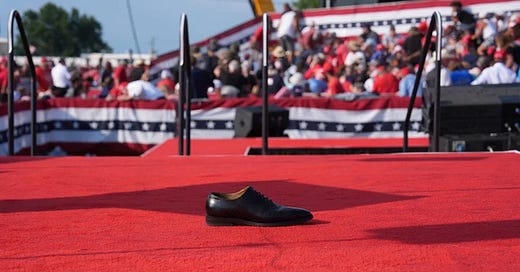



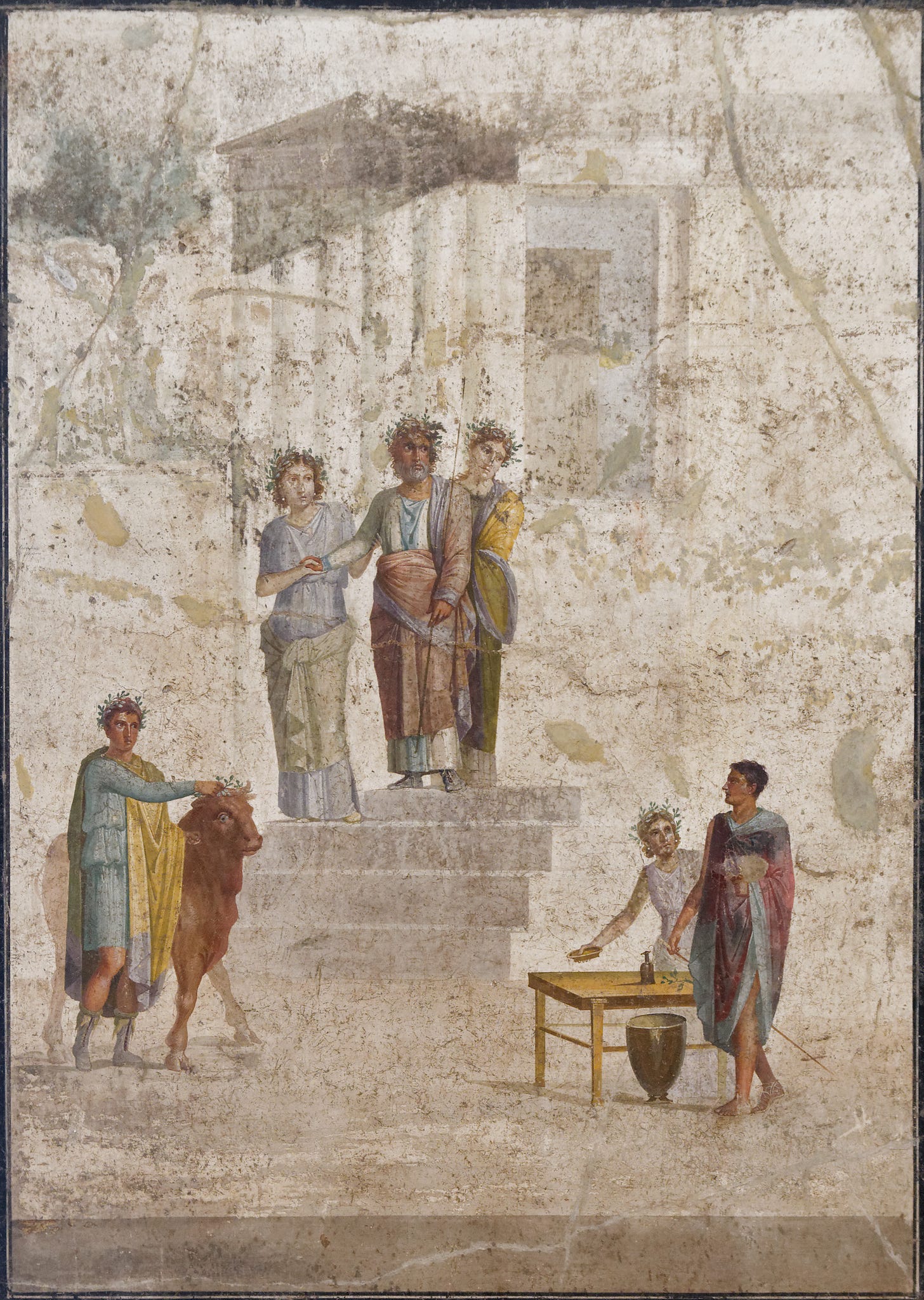
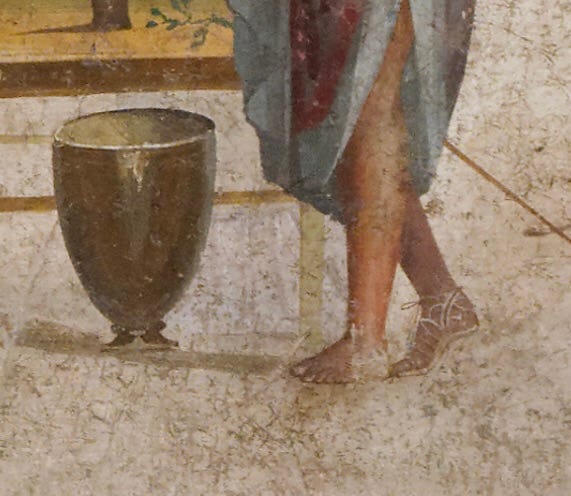
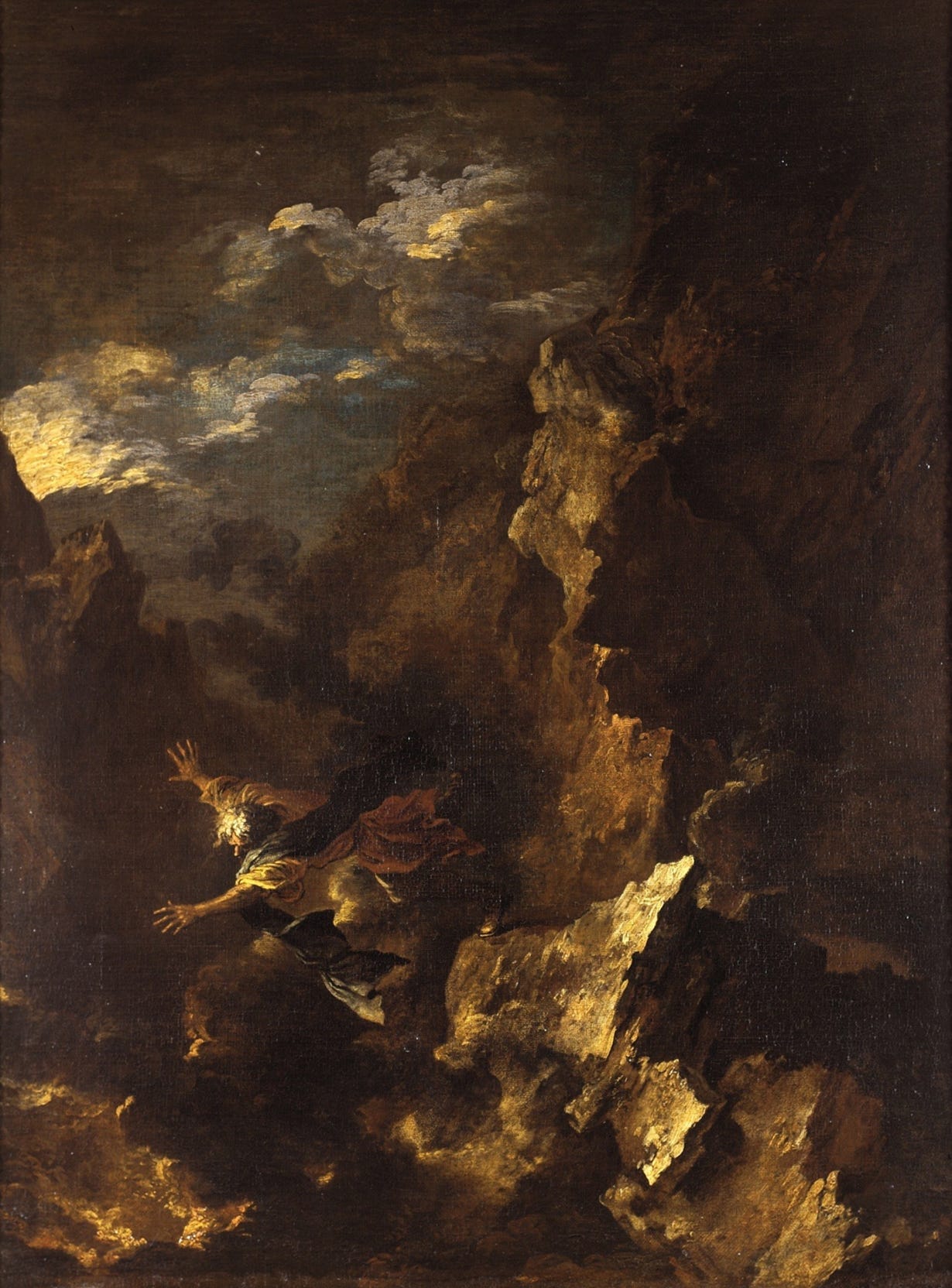
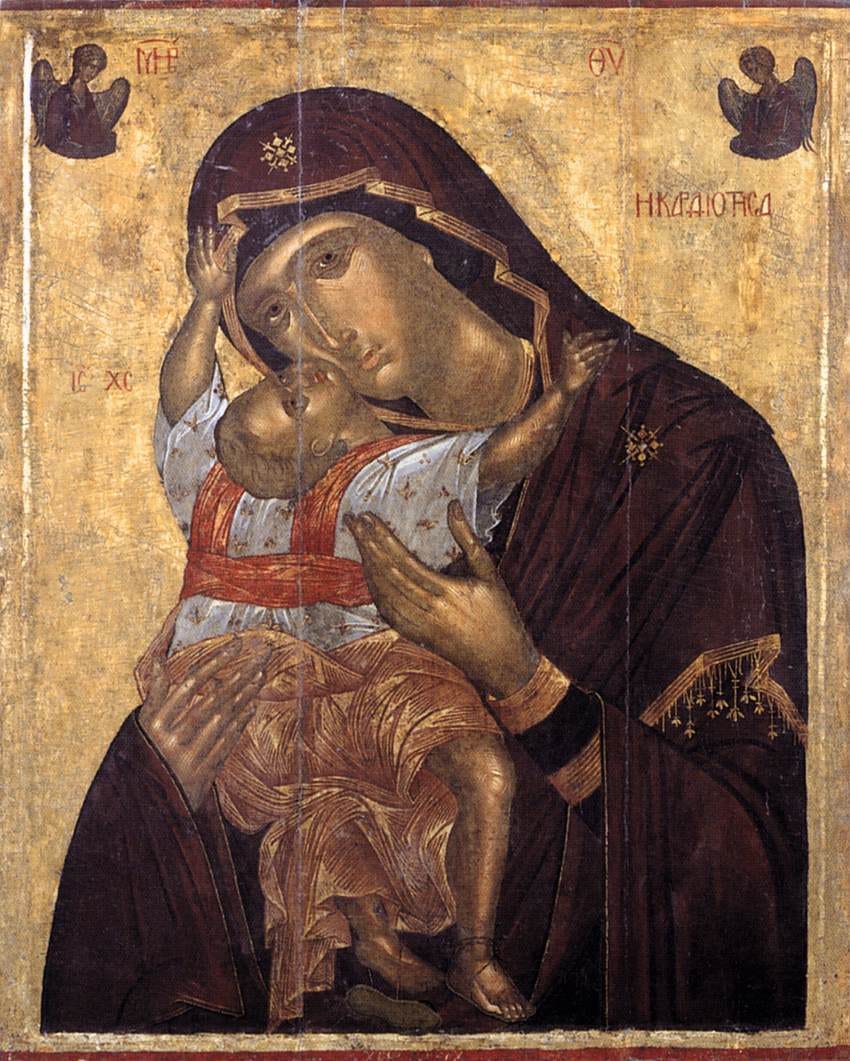
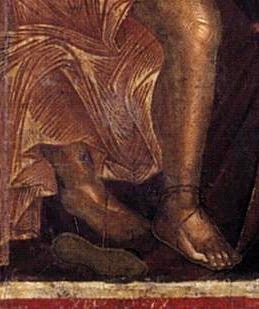

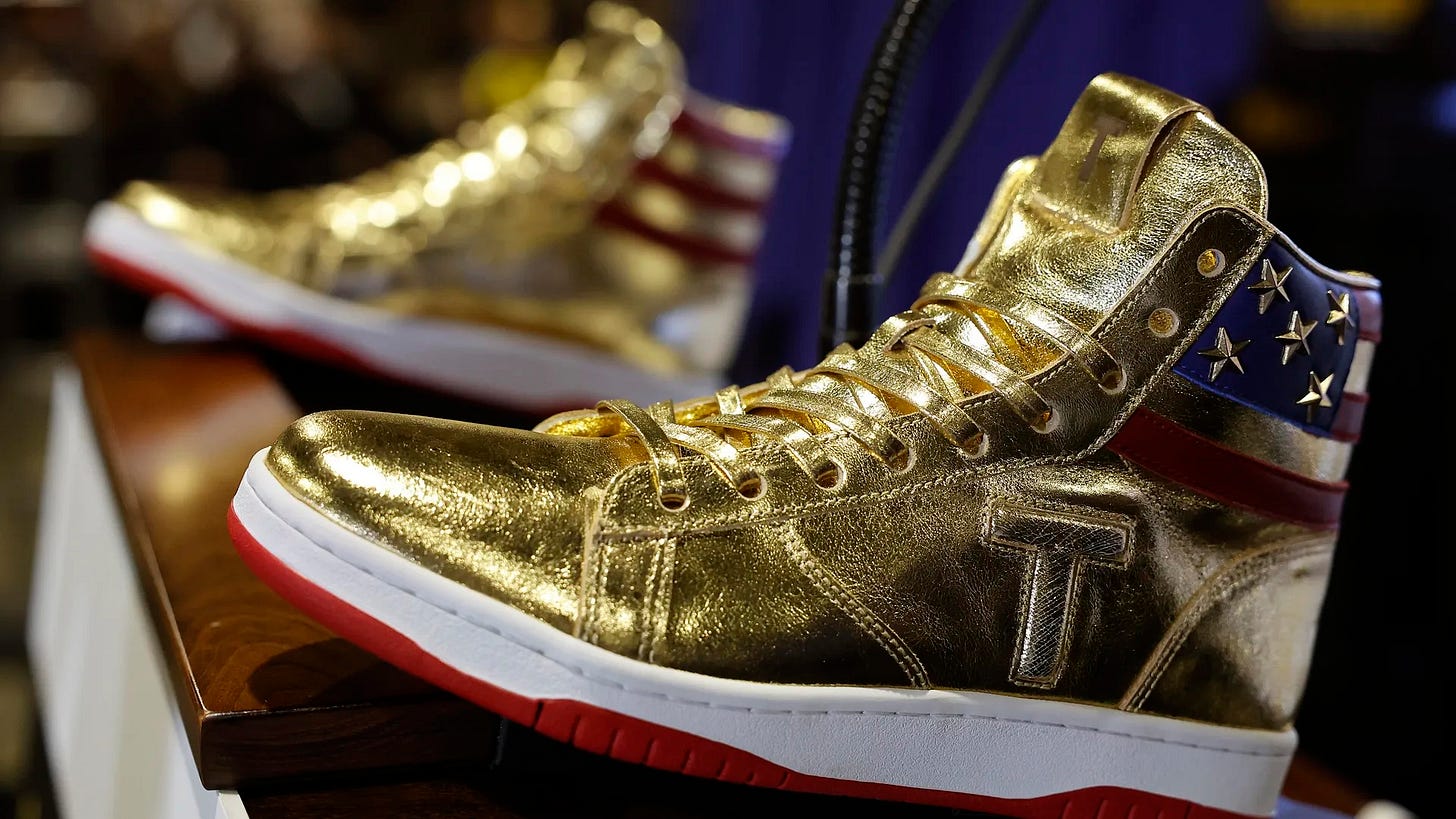
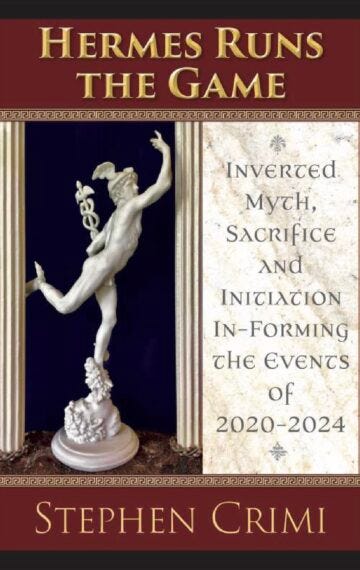
Dazzling!
Down to earth complement:
Trump's interlocutor being Putin, it is perhaps not totally frivolous to note that 'put' means 'path'.
To be trodden barefoot?
It's kinda dandy how everything can be neatly synchronized and archetypal patterns can be readily found in the situations of life in general. It's sort of pretty how humans (maybe other creatures too) have an uncanny and infinite power of rationalization. Using a fart as analogous to a hurricane doesn't take away from the hurricane's hurricaneness, but doing so is annoying.